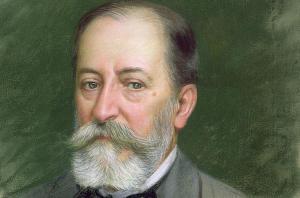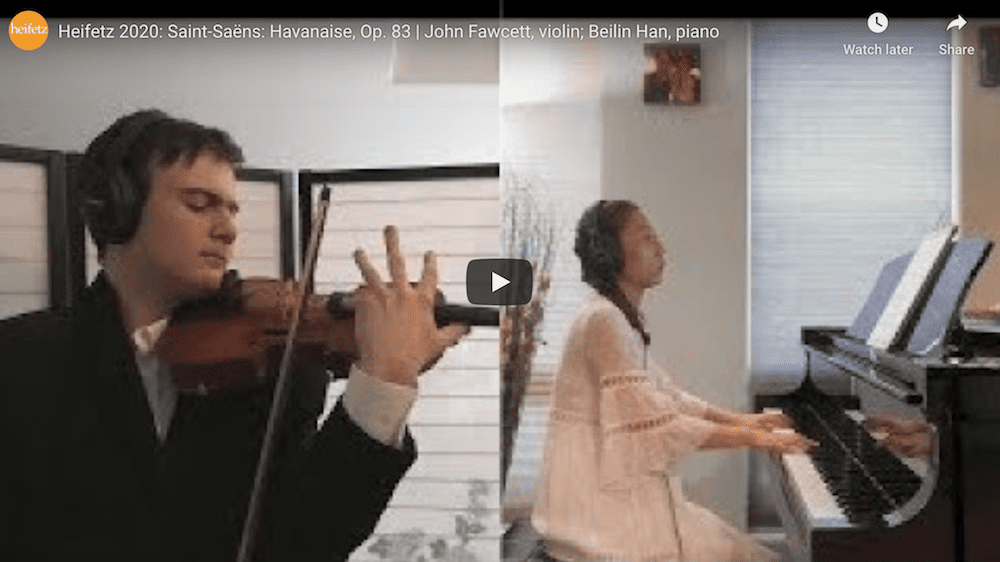French composer, organist, conductor and pianist Camille Saint-Saëns is perhaps most widely known for his orchestral suite The Carnival of the Animals and his Symphony No. 3 in C minor Op. 78, more commonly referred to as the Organ Symphony. Despite his proclivity for composing successful orchestral works and operas throughout the late 19th-century (a notable achievement at that time considering the musical establishment’s doubt of an organist’s ability to compose operatic works), he also wrote three violin concertos, the third of which was specifically for the Spanish virtuoso Pablo de Sarasate. In the world of the Heifetz Institute, Saint-Saëns is also know for his twin violin showpieces: the Introduction and Rondo Capriccioso, as well as the subject of this week’s feature: the Havanaise. Op. 83.
Originally composed for violin and orchestra in 1887 while on tour with the Cuban violinist Raphael Diaz Albertini (to whom he would dedicate the work), it is evident that Saint-Saëns, an avid world traveler, had a keen ear for music from far beyond the continent. The havanaise, or habanera, is a Cuban dance with a syncopated, binary rhythm and a strong emphasis on the first beat. Its appeal was already well established on the European music scene thanks to the show-stopping aria from another Frenchman, Georges Bizet, and his opera Carmen. Saint-Saëns’s take on the form showcases his ability to combine maserfully Afro-Cuban melodies and danceable rhythms with virtuosic elements for the violin soloist to create a remarkable blend of popular and classical music.
Heifetz 2020 student John Fawcett, returning to the Institue for a second time, pulls off a remarkable cross-country collaboration with faculty pianist Beilin Han to perform this infecious piece. John describes the joy and excitement he feels while performing it, and we think that the palpable energy would have made the globe-trotting Saint-Saëns proud!

Camille Saint-Saens (1835-1921). “It is said that the inspiration for the Havanaise came to Saint-Saëns in November 1885 while on a concert tour of Northern Europe. On a cold night in Brest he sat staring into the fire when suddenly the sound of the burning wood evoked a melodic idea in his head.”


Cuban violinist Rafael Díaz Albertini y Urioste (1857-1928)


